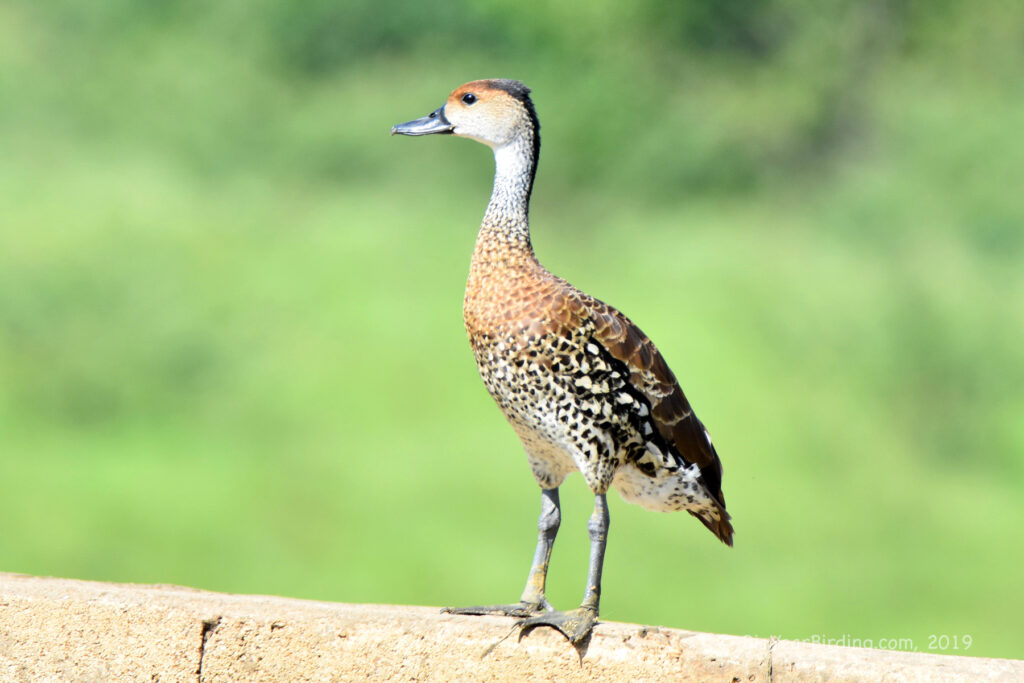The West Indian Whistling-Duck, also known as the Black-billed Whistling-Duck, is a striking waterfowl species found in the West Indies, South America, and parts of Florida. These ducks are medium-sized, measuring 18-22 inches in length and weighing between 1.5-2.5 pounds. They have long, slender necks and legs, and a distinctive whistle-like call that gives them their name.
One of the most distinguishing field marks of the West Indian Whistling-Duck is its black bill, which contrasts sharply with its cinnamon-brown head and neck. Its body is gray-brown, and its wings are dark with white stripes. In flight, these ducks have a characteristic profile, with their long necks held straight out and their wings held low.
West Indian Whistling-Ducks are non-migratory and can be found year-round in their range, which includes Cuba, the Dominican Republic, Haiti, Jamaica, Puerto Rico, and other Caribbean islands. However, populations in Florida are migratory and move south to the Caribbean during the winter months. These ducks are typically found in wetland habitats such as marshes, swamps, and ponds, and they feed on a variety of aquatic vegetation and insects.
Despite their non-migratory behavior, West Indian Whistling-Duck populations have been declining due to habitat loss and hunting pressure. Conservation efforts have been put in place to protect their wetland habitats and regulate hunting, and some captive breeding programs have been established to help boost populations.
Overall, the West Indian Whistling-Duck is a unique and fascinating species that plays an important role in its wetland ecosystem. Its distinctive appearance and vocalizations make it a favorite among birdwatchers, and efforts to protect and conserve its populations are essential for ensuring its continued survival.

